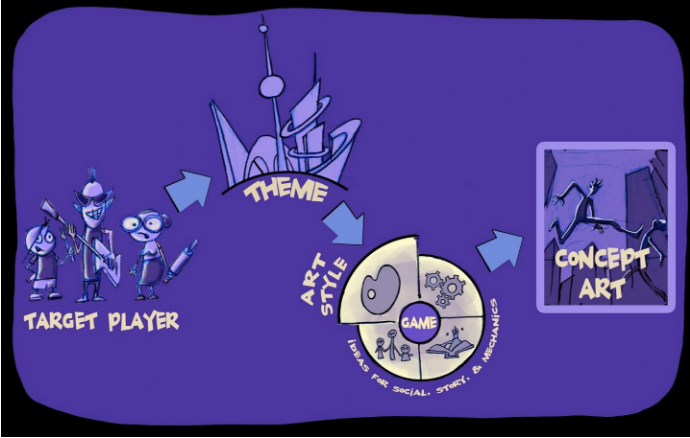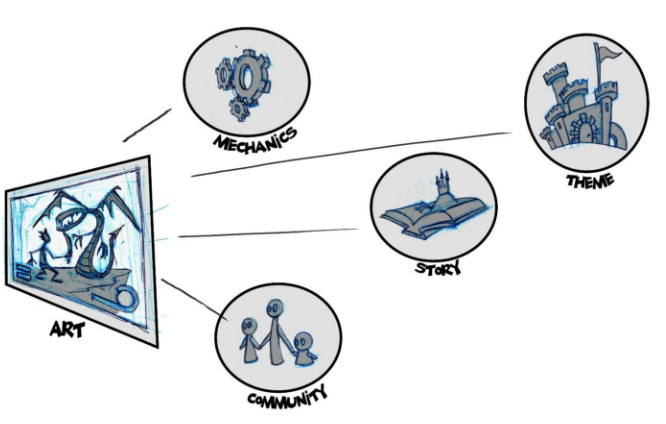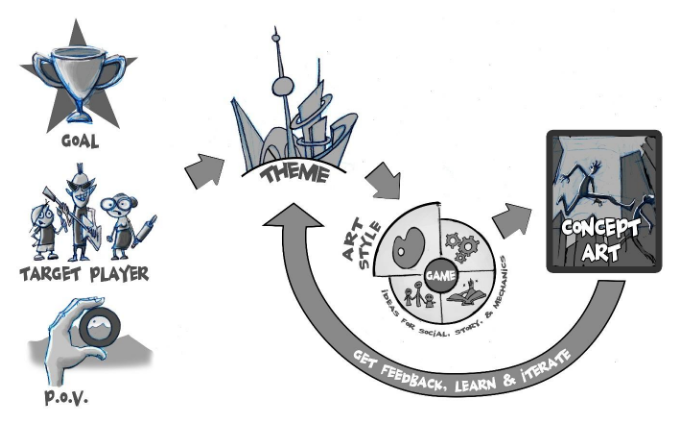By Felipe Lara – Instructor, New York Film Academy Game Design
A good piece of concept art can be used as a prototype to test one of the essential elements that your game will need to succeed: You’ll need to connect emotionally to your player. Spending on concept art is sometimes viewed as a luxury or even a distraction, but if done correctly, concept art will save you money and put you in the right direction towards developing a successful experience. In this article, I’ll dive into the significance of art, and four steps to develop effective concepts.
We all have game ideas; some good, some bad. But having an idea is far from having a concept. A concept is something more concrete and more developed, and when it is done right, it is practically a prototype that will help you validate the foundation of your game or experience: the emotional connection with your players.
Finding an Emotional Connection
One of the most important qualities of a successful game is the ability to connect emotionally with players. If you are able to connect with players and involve them emotionally through your game, you are practically on the other side. Don’t get me wrong, there are still many hurdles that can take your project off track, but you have achieved a fundamental requirement: the ability to connect and be relevant.
In a previous article I talked about the 4-step sequence that successful games follow: stand out, connect, engage, and grow. In this article, I am going to talk about how, by doing concept development the right way, you can figure out and validate early on if your game concept has the potential to stand out and connect with your target players.
The Role of Art in Your Game
The art of a game is the window to all its other elements. You access the mechanics, stories, and social features through characters, environments, and user interfaces. The right art style will help you engage your players and communicate the humor and fun of your game mechanics, or the drama of your story. The wrong one will be more of a hurdle than a helpful connector and amplifier. The right art style will also help you stand out and connect with players by communicating the mood, emotions, and theme of your game.
Concept Art as a Prototype to Validate Emotional Connection
The right concept art will reflect all the good qualities of your game: the emotions it creates, its core story, and its theme. Even if the core mechanics or story details are not represented in your concept art, the emotions resulting from them will be present. This is why the development of concept art can be a great tool to test if players connect with the basic theme and emotions of your game. Developing concept art can be a faster and cheaper way to test and validate one of the foundations of a successful game: emotional connection.
4 Steps to Create the Right Concept Art
- The first step is defining who is your target player, what are your goals, and what is your point of view (or the reason you care about making this game).
- The second step is to define a theme that your players resonate with. The only way to know if your theme resonates with an audience is by testing: pick a few members of your audience and talk to them about your theme, see if they relate with it. Remember that theme is not a topic, but rather an opinion about a topic. People don’t resonate with a topic by itself like “zombies in a post-apocalyptic world.” People resonate with views about the world that those topics make easy to represent — and that they agree with. For example, in the case of the topic “zombies in a post-apocalyptic world,” a possible theme would be “only the cut-throat can survive in the world.”
- Once you have defined your theme, pick an art style that also resonates with your audience, and brainstorm some ideas about possible mechanics, stories, and social interactions. I am not arguing for being a copycat regarding the art style. It is about narrowing down possibilities and starting from solid concrete examples pointing in the right direction. Once you have those, you can innovate within clear parameters. As with theme, the only way to know if your art style will resonate with your audience is by showing them pictures of similar art styles.
- Finally, with a clear theme, a ballpark idea about the art style, and ideas about story, mechanics, and social interactions; create a piece of concept art. This piece should represent your main activity or conflict, and your theme. Once you have something concrete, get feedback from your audience and iterate from what you learn.
If you follow these four simple steps, you will end up with a concrete piece of concept art that connects with your audience and can help you as a guide or compass throughout development. You will not have a game yet, but you will have a good foundation to build one and something concrete that can guide your decisions for the rest of the development process.
Ready to learn more about game design? Find more info about New York Film Academy Game Design including student work here.



